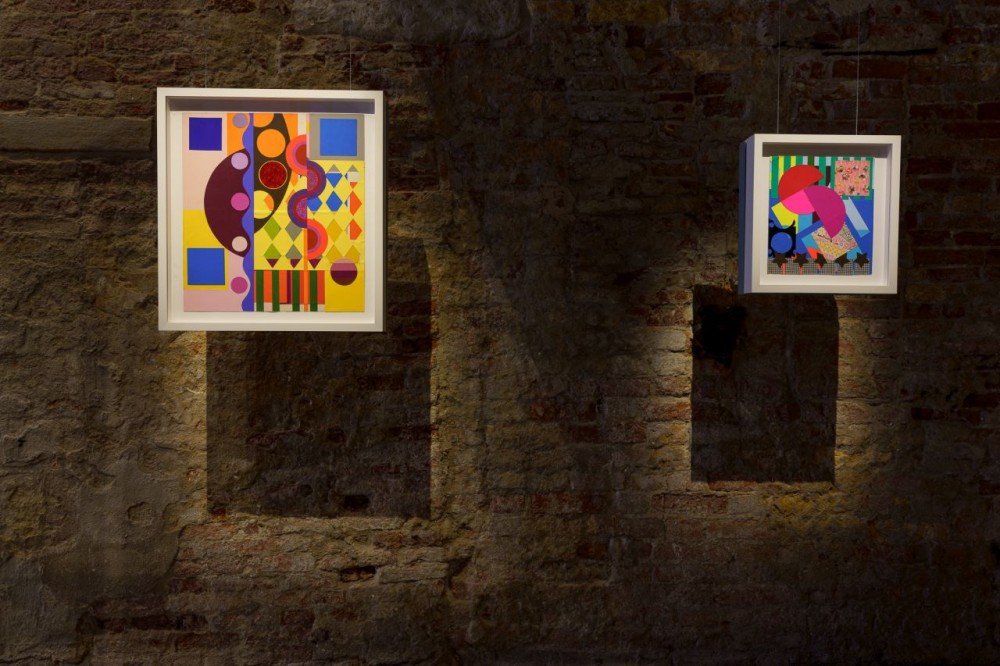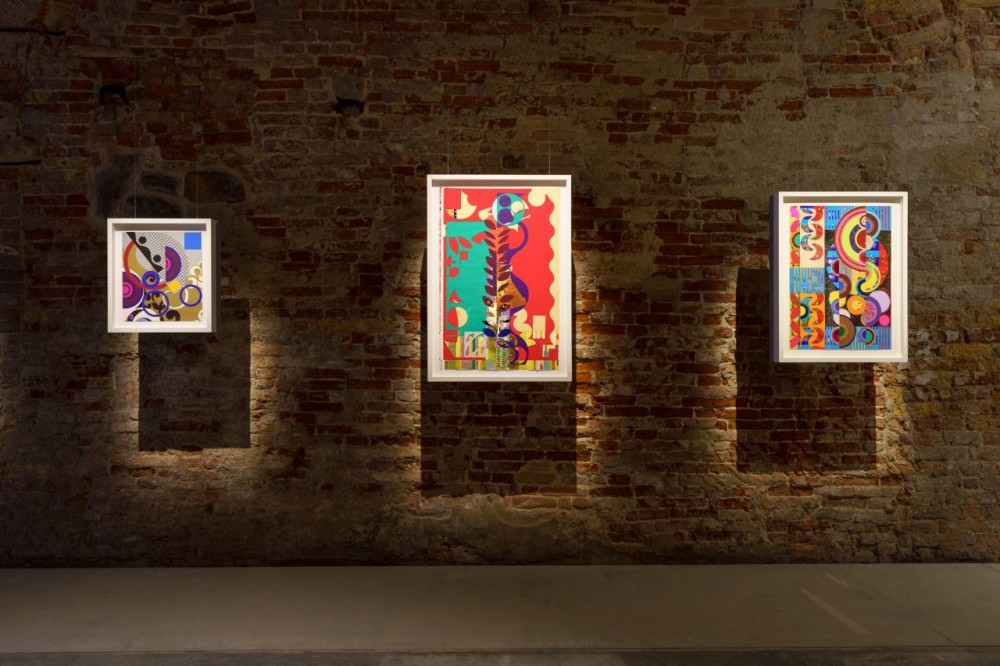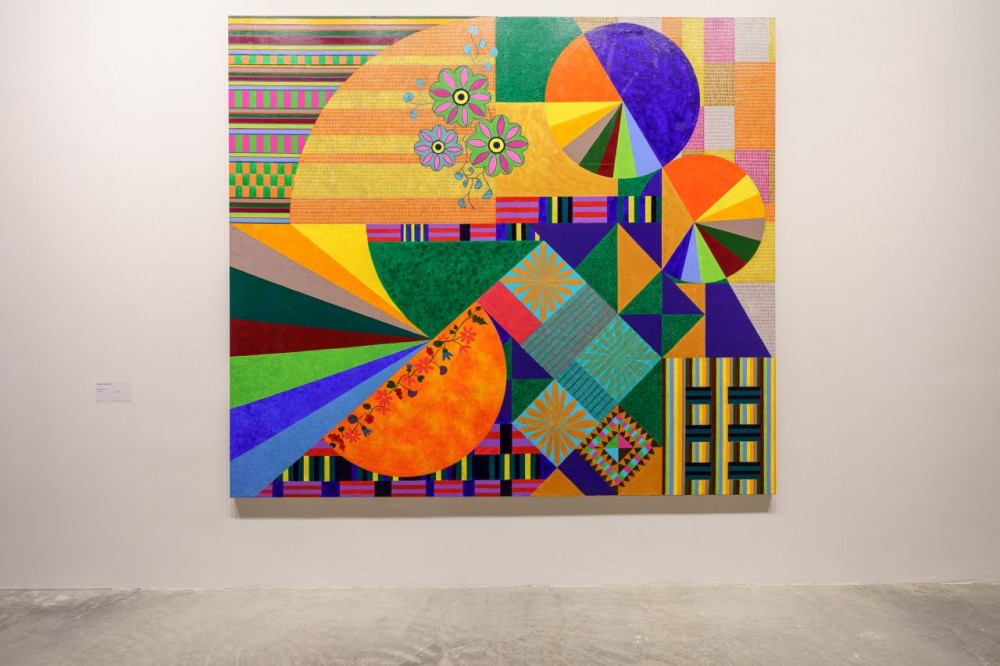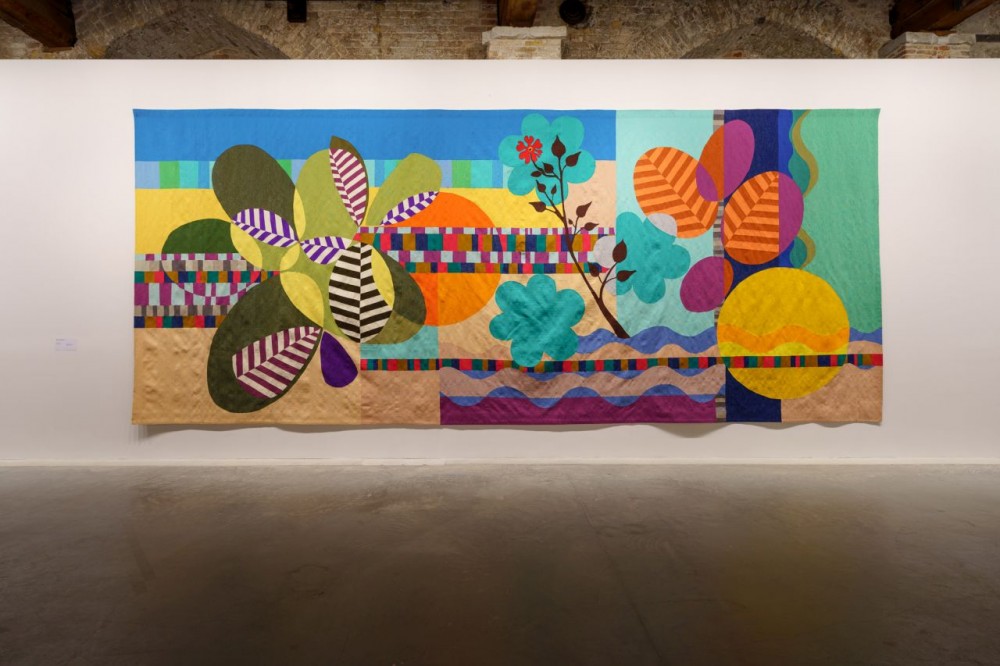
The collaboration between La Biennale di Venezia and the Victoria and Albert Museum in London, this year in its eighth edition, made possible the Special Project of the Applied Arts Pavilion hosted in the Sale d'Armi of the Arsenale, jointly organised by the two institutions. The artist selected by Curator Adriano Pedrosa is Beatriz Milhazes.

Beatriz Milhazes is the most relevant Brazilian artist investigating colour in the expanded field of painting today and, in her work, she breaks the limits between abstract and figurative, high and low art. Milhazes’s five large-scale paintings, specially created for the V&A Pavilion, refer to the palette and patterns of a variety of traditional woven textiles from different cultures. For Milhazes, their complex structures create “an incredible source of motifs” based on the human observation of nature’s inner regularity.
In Memorias do Futuro I, her own repertoire of targets, rays, waves, and florals intersects with the hues and patterns appropriated from these textiles. Spectacular colour clusters are made up of short brushstrokes on monoprint colour fields. These vibrant compositions result from an underlying grid and calculated decisions, mirroring the intricacy of the knots in the monumental tapestry featured in the Pavilion. The title of the work, Pindorama (2020–2022), is the Tupi-Guarani peoples’ word for the Brazilian territory before colonisation.

After studying painting at the Escola de Artes Visuais do Parque Lage in Rio de Janeiro (1980–1982), since the 1980s Beatriz Milhazes has been developing her own visual lexicon and method, a combination of painting, monotype, collage, and monoprint, with which she defies modernist flat space pioneered by artists such as Matisse, Sonia Delaunay, and Mondrian. Milhazes manipulates a diverse collection of motifs that include Latin
American and Brazilian Baroque elements, flowers, Carnival decorations, lace, luxury design, pop icons, and Op Art patterns. In her work, she includes references to Brazilian artists such as Tarsila do Amaral and Ione Saldanha or movements such as Neo-concretism. She combines these, building saturated layers and highly dynamic compositions. Since 2000, Milhazes has been exhibiting in Brazil, Colombia, Venezuela, Argentina, the US, Japan, France, Germany, and the UK. She has also created vinyl murals and stained glass in public spaces.

«Adriano Pedrosa, curator of the 60th International Art Exhibition, has therefore identified Beatriz Milhazes as the artist with the most suitable sensibility to address the works housed in the Victoria and Albert Museum. As in previous editions, the result of this exploration and rendering appears to be a miracle of synthesis and dialogue. And if it is true that artists observe reality from their inner filter, then it is easy to understand why Milhazes chose some of the textiles from the V&A Museum’s collection as the starting point for her intervention in the Pavilion.»
Pietrangelo Buttafuoco, President of La Biennale di Venezia

«In our eighth collaboration with La Biennale di Venezia at the Pavilion of Applied Arts, we are thrilled to have collaborated with Brazilian artist Beatriz Milhazes, who has described the V&A as her favourite museum. In this exciting series of vibrant, abstract paintings, Milhazes has been inspired by several textiles in our collection, using their colours and patterns to constrain her palette and force new structures. The mission of the V&A, with collections spanning 5000 years of human ingenuity, is to spark creativity in similar fashion.»
Tristram Hunt, Director of the Victoria and Albert Museum, London


